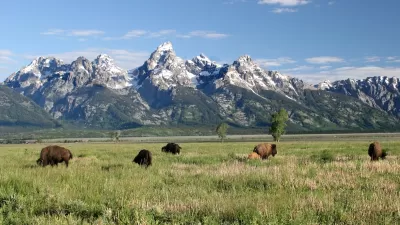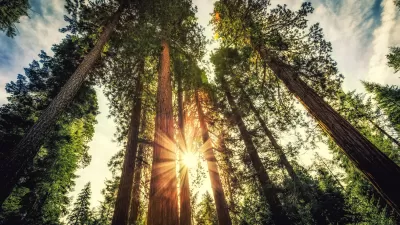An order issued late last week pushes for increased mineral extraction on federally owned public lands.

A new executive order from the Trump administration titled “Immediate Measures to Increase American Mineral Production” enables mineral extraction on federal public lands. According to an article from Rocky Mountain Community Radio by Caroline Llanes, “The order includes uranium, copper, potash, gold, and gives a new ‘National Energy Dominance Council’ broad authority to designate other minerals.”
The order also calls for streamlining the permitting process for mining and the immediate issuance of approval for some projects, encouraging federal departments to seek feedback from the mining industry on “regulatory bottlenecks” but not from local communities that would be impacted.
In addition to harm to wildlife and local ecosystems, Rachel Hamby, policy director at the Center for Western Priorities notes, “there are the well-known impacts to things like surface and groundwater and contamination of soil, and even the release of dangerous substances into the air that are gonna travel beyond the footprint of the mine or the production facility and impact nearby communities.”
Public lands across the country, especially in the West, are under threat as the new administration attempts to claw back protections for new national monuments designated by former presidents such as Chuckwalla National Monument in Southern California and Bears Ears National Monument in Utah. Now, Trump wants to end the Antiquities Act, which allows presidents to create new national monuments for historical, environmental, or cultural reasons, and increase resource extraction on protected lands.
FULL STORY: Executive order from Trump seeks to ramp up mining operations on federal public lands

Manufactured Crisis: Losing the Nation’s Largest Source of Unsubsidized Affordable Housing
Manufactured housing communities have long been an affordable housing option for millions of people living in the U.S., but that affordability is disappearing rapidly. How did we get here?

Americans May Be Stuck — But Why?
Americans are moving a lot less than they once did, and that is a problem. While Yoni Applebaum, in his highly-publicized article Stuck, gets the reasons badly wrong, it's still important to ask: why are we moving so much less than before?

Research Shows More Roads = More Driving
A national study shows, once again, that increasing road supply induces additional vehicle travel, particularly over the long run.

Judge Halts Enforcement of Anti-Homeless Laws in Grants Pass
The Oregon city will be barred from enforcing two ordinances that prosecute unhoused residents until it increases capacity and accessibility at designated camping sites.

Advancing Sustainability in Los Angeles County Schools
The Los Angeles County Office of Education’s Green Schools Symposium brings together educators, students, and experts to advance sustainability in schools through innovative design, climate resilience strategies, and collaborative learning.

Using Old Oil and Gas Wells for Green Energy Storage
Penn State researchers have found that repurposing abandoned oil and gas wells for geothermal-assisted compressed-air energy storage can boost efficiency, reduce environmental risks, and support clean energy and job transitions.
Urban Design for Planners 1: Software Tools
This six-course series explores essential urban design concepts using open source software and equips planners with the tools they need to participate fully in the urban design process.
Planning for Universal Design
Learn the tools for implementing Universal Design in planning regulations.
City of Moreno Valley
Institute for Housing and Urban Development Studies (IHS)
City of Grandview
Harvard GSD Executive Education
NYU Wagner Graduate School of Public Service
City of Cambridge, Maryland
Newport County Development Council: Connect Greater Newport





























